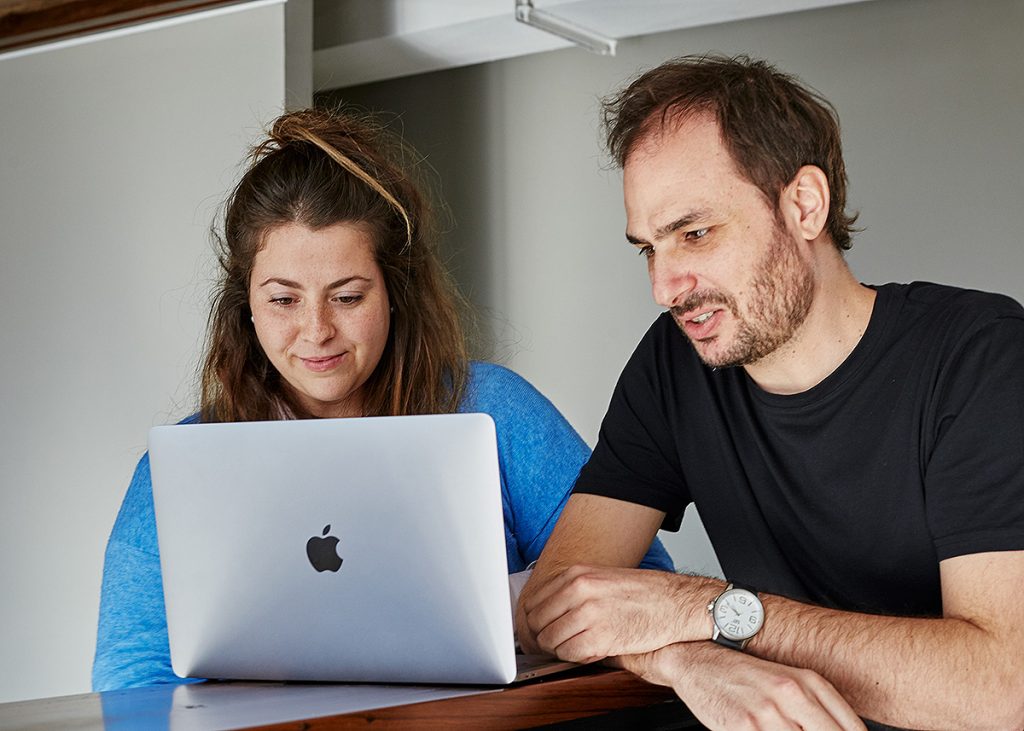Responding rapidly to change is among the most valuable skills a software development team can have. To be successful, we need to think creatively and take a proactive and pragmatic approach to problem-solving, even when the technical and business environments are constantly evolving.
Here at Making Sense, we’ve found that we can fulfill those Agile requirements even more successfully with an integrated practice: one that prioritizes communication between UX and front-end teams. In fact, we’ve seen that our teams actually benefit from a dynamic environment because it provides them with the opportunity to optimize their processes. As a result, the daily challenges that we face become opportunities to improve ourselves and our processes.
Here, I’m going to explain how this works and why it’s so important to have a good relationship (with great communication) between your front-end and UX teams.
When New Requirements Impact Multiple Layers of the Application…
Currently, I’m part of a front-end team that’s working on a complex solution for a customer in the health-care industry. I’m going to describe one of the typical problems that might emerge in a changing environment like this, and then how good inter-team communication can help.
Suppose we are working on a feature and there’s a recent update coming from the client that requires us to:
- Add a few more fields to a certain request
- Update the business logic
- Update existing designs
- And more…
It’s very challenging when we face this type of problem because it impacts so many application layers. This is where good communication between teams comes in. The front-end and the UX team can help each other by working together and taking these three steps:
- We can join forces as a single team and view these types of challenges as opportunities for coming up with creative ideas.
- We can take a moment and critically analyze the business information collected so far.
- Then we can rethink the way we are looking at the problem… with the same resources but with a different mindset.
Feature Changes? UX Team to the Rescue
Having an experienced UX team to count on comes in extremely handy at this point. Why? Because MakingSense’s UX team has been there from the beginning of the project. They’ve been asking the client all kinds of questions, from the most obvious to the most complex. They’ve even been asking questions that can’t be answered immediately and may lead the client’s staff to rethink their own business rules during the early stages of the project.
In this way, the UX team not only develops a very deep understanding of the business, but something perhaps more important to the overall process. By the time we start developing a feature, the UX team has already managed to develop a tight relationship with the client. What does that mean from the developer’s point of view?
- It’s probable that the UX team already has an answer for a question the front-end team might not ask until we actually get into hands-on development.
- If they don’t already have that answer, they can most certainly help and guide us to reach “that single person” on the client side who knows the details of certain business rules that will help us. Then, we can all try to find a solution together.
We can take advantage of this UX-client relationship in order to go straight to the point and gather all the information we need to complete the feature we’re working on.
So in the end, for the front-end team I worked on, fluid and effective communication with the UX team was crucial. Relying on them and their experiences that they shared with the client made things a lot easier for us as front-end developers. And this was especially true when we had to make decisions that could have affected not only the user experience, but the business logic as well.
The Takeaway
Getting the UX team involved in the early stages of the process is probably the single-most important thing you can do when it comes to handling new feature requirements like the ones I outlined earlier. With their deep knowledge and understanding of the business needs, they bridge the gap between the client and the front-end team, providing a richer context and smoothing out the process for responding to challenges.

